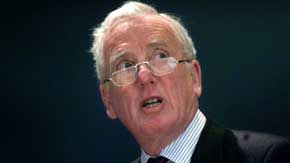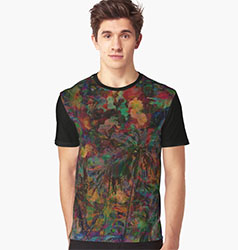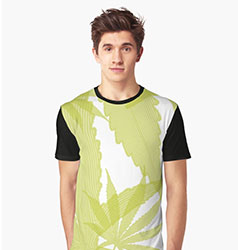In part one of this series the preclinical scientific evidence illustrating the involvement of the endocannabinoid system (ECS) in the physiological progression of Autism Spectrum Disorder (ASD) was provided. Here we’ll highlight some of the pharmacological characteristics that phytocannabinoids share with endocannabinoids, the use of phytocannabinoids in the treatment of symptoms and diseases associated with ASD, and why having access to a variety of cannabis chemotypes will always be preferable to a select cannabinoid and/or ratio.
The anecdotal reports of successful cannabinoid therapies seem to be supported by the fact that phytocannabinoids from cannabis, and other natural sources, display similar pharmacological characteristics to that of endocannabinoids that are dysregulated in ASD.[31] The potential therapeutic value of supplementing the endocannabinoid system with phytocannabinoids has been suggested in the treatment of a number of diseases with suspected underlying endocannabinoid deficiencies.[34] Documentation of the safety and clinical efficacy of phytocannabinoids in a variety of treatments continues to grow.[16] In regards to the treatment of ASD, some similar characteristics are worth highlighting, including:
- Promotion of Neurogenesis[19, 2, 5]
- Neuroprotection[15, 23, 35]
- Powerful Antioxidants[3, 31, 15]
- Neuromodulation[8, 23, 31, 43]
- Anti-inflammatory[31, 18]
Based on preclinical research ECS deficiencies appear to be associated with ASD, and it’s implicated as a potential target for treatment. Phytocannabinoids target the ECS and display similar pharmacological characteristics to endocannabinoids that are dysregulated. It’s been suggested that therapies for conditions with corresponding ECS deficiencies may include supplementation with phytocannabinoids. This seems to potentially support the anecdotal reports of successful cannabinoid therapies in ASD.
Treating Symptoms Associated with ASD
There is a considerable body of supportive preclinical data in regards to targeting the ECS with phytocannabinoids in the treatment of a number of symptoms and diseases associated with ASD. For sake of brevity some of these will be highlighted and cited:
- G.I. Disorders[4, 10, 42]
- Repetitive Behaviors[6, 9, 14]
- Seizures[20, 32, 40]
- Sleep Dysfunction[28, 41]
- Self Injurious Behavior and Tantrums[27, 29, 30]
- Tuberous Sclerosis[21, 38, 44]
- Cerebral Ischemia[37, 7, 26, 12]
- Depression/Anxiety[17, 1, 36]
- Cachexia[11, 24]
Again, anecdotal reports of success appear to be supported by an abundance of preclinical research that indicates a potential role for phytocannabinoids in the treatment of symptoms and diseases associated with ASD.
Botanical Extracts > Dronabinol
Due to the relatively common off-label use of Dronabinol (a man-made/synthetic form of THC), for ASD therapy, it seems relevant to point out the substantial data, including clinical studies, suggesting that the combined administration of CBD along with THC (and possibly other cannabinoids/terpenes present in cannabis) exhibit additive and synergistic effects. This is known as the entourage effect and results in greater clinical efficacies when compared to either cannabinoid alone.[25, 18, 34]
The second most prominent cannabinoid in cannabis is cannabidiol (CBD).[13] CBD has been shown to inhibit intoxication, sedation, and tachycardia associated with delta-9-tetrahydrocannabinol (THC).[34] It’s been shown to increase the clinical efficacy of THC, while adding therapeutic value in its own right.[34]
A large portion of the research conducted thus far with ASD and cannabinoids has been with Dronabinol (a synthetic form of THC) alone. Dronabinol has indicated potential for treatment in a single adolescent case study of autism.[22] Does that mean THC along with CBD might offer increased clinical efficacy similar to the way they have been demonstrated to with other conditions?[34] Based on the results of previous research and anecdotal reports this might be the case.
The added benefit of additional cannabinoids (and the added benefit of specifically tailoring ratios) is an important component that sets botanical extracts from cannabis apart from THC or CBD alone. This is why having access to a variety of cannabis chemotypes will always have more potential for therapeutic value than a select cannabinoid, ratio, or cannabis chemotype.
Discussion
Based on their ability to target the ECS, and their shared characteristics with dysfunctional endocannabinoid levels, preclinical evidence supports the potential therapeutic value of phytocannabinoids in ASD therapy.
Highlighting individual pharmacological characteristics of CBD, THC, and other phytocannabinoids is beyond the scope of this paper. However, based on the ECS deficiencies associated with ASD, and the ability of phytocannabinoids to target and modulate aspects of the deficiencies, anecdotal reports seem to be supported by the best available scientific data. It appears that phytocannabinoids have the potential for therapeutic value in some severe cases of ASD.
This brings us to the topic of the final installment to this ASD series, the practical use of botanical extracts and when it might be appropriate to explore potential cannabis-based therapies for ASD symptom treatment.
Citations & References
There are 44 references in this article. Click here to view them all.
- Almeida, Valeria, et al. "Cannabidiol exhibits anxiolytic but not antipsychotic property evaluated in the social interaction test." Progress in NeuroPsychopharmacology and Biological Psychiatry 41 (2013): 30-35.
- Avraham, Hava Karsenty, et al. "The cannabinoid CB2 receptor agonist AM1241 enhances neurogenesis in GFAP/Gp120 transgenic mice displaying deficits in neurogenesis." British journal of pharmacology2 (2014): 468-479.
- Borges, Rosivaldo S., et al. "Understanding the molecular aspects of tetrahydrocannabinol and cannabidiol as antioxidants." Molecules10 (2013): 12663-12674.
- Camilleri, Michael, et al. "Cannabinoid receptor 1 gene and irritable bowel syndrome: phenotype and quantitative traits." American Journal of Physiology Gastrointestinal and Liver Physiology 304.5 (2013): G553-G560.
- Campos, Alline Cristina, et al. "Multiple mechanisms involved in the largespectrum therapeutic potential of cannabidiol in psychiatric disorders." Philosophical Transactions of the Royal Society B: Biological Sciences 367.1607 (2012): 3364-3378.
- Casarotto, Plinio C., et al. "Cannabidiol inhibitory effect on marble-burying behaviour: involvement of CB1 receptors." Behavioural pharmacology 21.4 (2010): 353-358.
- Choi, In-Young, et al. "Activation of Cannabinoid CB2 Receptor–Mediated AMPK/CREB Pathway Reduces Cerebral Ischemic Injury." The American journal of pathology 182.3 (2013): 928-939.
- Davis, Mellar, et al. "The emerging role of cannabinoid neuromodulators in symptom management." Supportive care in cancer1 (2007): 63-71.
- Deiana, Serena, et al. "Plasma and brain pharmacokinetic profile of cannabidiol (CBD), cannabidivarine (CBDV), ∆9-tetrahydrocannabivarin (THCV) and cannabigerol (CBG) in rats and mice following oral and intraperitoneal administration and CBD action on obsessive–compulsive behaviour." Psychopharmacology 219.3 (2012): 859-873.
- Di Sabatino, A., et al. "The endogenous cannabinoid system in the gut of patients with inflammatory bowel disease." Mucosal immunology 4.5 (2011): 574-583.
- Engeli, Stefan. "Central and peripheral cannabinoid receptors as therapeutic targets in the control of food intake and body weight." Appetite Control. Springer Berlin Heidelberg, 2012. 357-381.
- Garcia-Bonilla, Lidia, et al. "Immune mechanisms in cerebral ischemic tolerance." Frontiers in neuroscience 8 (2014).
- Gertsch, Jürg, Roger G. Pertwee, and Vincenzo Di Marzo. "Phytocannabinoids beyond the Cannabis plant–do they exist?." British journal of pharmacology 160.3 (2010): 523-529.
- Gomes, Felipe V., et al. "Facilitation of CB1 receptor-mediated neurotransmission decreases marble burying behavior in mice." Progress in NeuroPsychopharmacology and Biological Psychiatry 35.2 (2011): 434-438.
- Hampson, Aidan J., Julius Axelrod, and Maurizio Grimaldi. "Cannabinoids as antioxidants and neuroprotectants." U.S. Patent No. 6,630,507. 7 Oct. 2003.
- Hazekamp, Arno, and Franjo Grotenhermen. "Clinical Studies With Cannabis and Cannabinoids, 2005-2009." (2013).
- Hill, Matthew N., and Boris B. Gorzalka. "The endocannabinoid system and the treatment of mood and anxiety disorders." CNS & Neurological Disorders-Drug Targets (Formerly Current Drug Targets-CNS & Neurological Disorders) 8.6 (2009): 451-458.
- Izzo, Angelo A., et al. "Non-psychotropic plant cannabinoids: new therapeutic opportunities from an ancient herb." Trends in pharmacological sciences 30.10 (2009): 515-527.
- Jiang, Wen, et al. "Cannabinoids promote embryonic and adult hippocampus neurogenesis and produce anxiolytic-and antidepressant-like effects." Journal of Clinical Investigation11 (2005): 3104.
- Jones, Nicholas A., et al. "Cannabidiol exerts anti-convulsant effects in animal models of temporal lobe and partial seizures." Seizure 21.5 (2012): 344-352.
- Krueger, Dilja D., and Nils Brose. "Evidence for a common endocannabinoidrelated pathomechanism in autism spectrum disorders." Neuron 78.3 (2013): 408410.
- Kurz, René, and Kurt Blaas. "Use of dronabinol (delta-9-THC) in autism: A prospective single-case-study with an early infantile autistic child." (2010)
- Lara-Celador, I. et al. “Using the Endocannabinoid System as a Neuroprotective Strategy in Perinatal Hypoxic-Ischemic Brain Injury.” Neural Regeneration Research8 (2013): 731–744.
- Marco, Eva M., et al. "The role of the endocannabinoid system in eating disorders: pharmacological implications." Behavioural pharmacology 23.5 and 6 (2012): 526-536.
- McPartland, John M., and Ethan B. Russo. "Cannabis and cannabis extracts: greater than the sum of their parts?." Journal of Cannabis Therapeutics 1.3-4 (2001): 103-132.
- Murikinati, Sasidhar, et al. "Activation of cannabinoid 2 receptors protects against cerebral ischemia by inhibiting neutrophil recruitment." The FASEB journal 24.3 (2010): 788-798.
- Müller-Vahl, K. R., et al. "Cannabis in movement disorders." Forschende Komplementärmedizin/Research in Complementary Medicine 6.Suppl. 3 (2004): 23-27.
- Murillo-Rodriguez, Eric, et al. "The emerging role of the endocannabinoid system in the sleep-wake cycle modulation." Central Nervous System Agents in Medicinal Chemistry (Formerly Current Medicinal Chemistry-Central Nervous System Agents) 11.3 (2011): 189-196.
- Onaivi, E. S., et al. "Consequences of cannabinoid and monoaminergic system disruption in a mouse model of autism spectrum disorders." Current neuropharmacology 9.1 (2011): 209.
- Passie, Torsten, et al. "Mitigation of post‐traumatic stress symptoms by Cannabis resin: A review of the clinical and neurobiological evidence." Drug testing and analysis7-8 (2012): 649-659.
- Pertwee, R. G., et al. "International Union of Basic and Clinical Pharmacology. LXXIX. Cannabinoid receptors and their ligands: beyond CB1 and CB2." Pharmacological reviews 62.4 (2010): 588-631.
- Porter, Brenda E., and Catherine Jacobson. "Report of a parent survey of cannabidiol-enriched cannabis use in pediatric treatment-resistant epilepsy." Epilepsy & Behavior 29.3 (2013): 574-577.
- Russo, Ethan, and Geoffrey W. Guy. "A tale of two cannabinoids: the therapeutic rationale for combining tetrahydrocannabinol and cannabidiol." Medical hypotheses 66.2 (2006): 234-246.
- Russo, Ethan B. "Taming THC: potential cannabis synergy and phytocannabinoid‐terpenoid entourage effects." British Journal of Pharmacology 163.7 (2011): 1344-1364.
- Sanchez, A. J., and A. Garcia-Merino. "Neuroprotective agents: cannabinoids." Clinical Immunology1 (2012): 57-67.
- Schier, Alexandre Rafael de Mello, et al. "Cannabidiol, a Cannabis sativa constituent, as an anxiolytic drug." Revista Brasileira de Psiquiatria 34 (2012): 104-110.
- Schmidt, W., et al. "Cannabinoid receptor subtypes 1 and 2 mediate long-lasting neuroprotection and improve motor behavior deficits after transient focal cerebral ischemia." Neuroscience 227 (2012): 313-326.
- Shu, Hai-Feng, et al. "Expression of TRPV1 in cortical lesions from patients with tuberous sclerosis complex and focal cortical dysplasia type IIb." Brain and Development 35.3 (2013): 252-260.
- Russo, Ethan B. "Clinical endocannabinoid deficiency (CECD): can this concept explain therapeutic benefits of cannabis in migraine, fibromyalgia, irritable bowel syndrome and other treatment-resistant conditions?." Neuro endocrinology letters 25.1-2 (2003): 31-39.
- van Rijn, Clementina M., et al. "Endocannabinoid system protects against cryptogenic seizures." Pharmacol Rep 63 (2011): 165-168.
- Ware, Mark A., et al. "The effects of nabilone on sleep in fibromyalgia: results of a randomized controlled trial." Anesthesia & Analgesia 110.2 (2010): 604-610.
- Wright, K. L., M. Duncan, and K. A. Sharkey. "Cannabinoid CB2 receptors in the gastrointestinal tract: a regulatory system in states of inflammation." British journal of pharmacology 153.2 (2008): 263-270
- Youssef, F. F., and A. J. Irving. "From cannabis to the endocannabinoid system: refocussing attention on potential clinical benefits." West Indian Medical Journal 61.3 (2012).
- Zurolo, E., et al. "CB1 and CB2 cannabinoid receptor expression during development and in epileptogenic developmental pathologies." Neuroscience 170.1 (2010): 28-41.
Read more http://www.medicaljane.com/2015/06/17/part-two-the-role-of-phytocannabinoids-in-asd-therapy/
Latest
Coronavirus Strikes Massachusetts Cannabis Company Employees
Reassessing the Essential: Cannabis in the Time of a Pandemic
5 Reasons To Try Aspen Valley CBG Flower (30% Off)
High Times Cannabis Cups Go Virtual In Wake Of Coronavirus Pandemic
Drug Enforcement Administration Proposes Plan To Expand Cannabis Research
Ghana Legalizes Cannabis For Medicinal And Industrial Uses
The cheapest legal weed in Canada: Discover these cannabis ‘value brands’
Cannabis and coronavirus: Here’s what you need to know
cannabis designs
The Best Of
WHO Rules CBD Should Not Be a Scheduled Drug
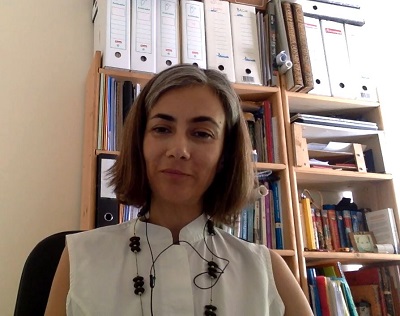
Dr Cristina Sanchez PhD video interview on medical marijuana and cancer
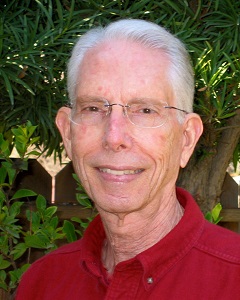
Biochemist Dennis Hill interview; Cannabis oil as a cure for cancer.
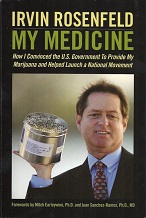
The unofficial World Record holder for cannabis smoking part 1
